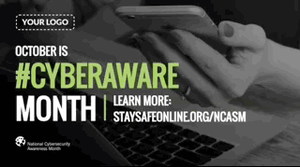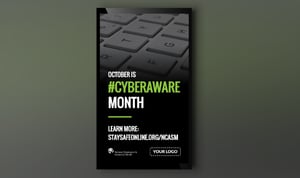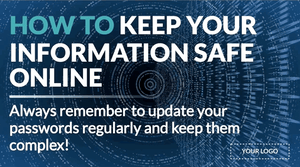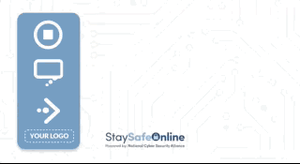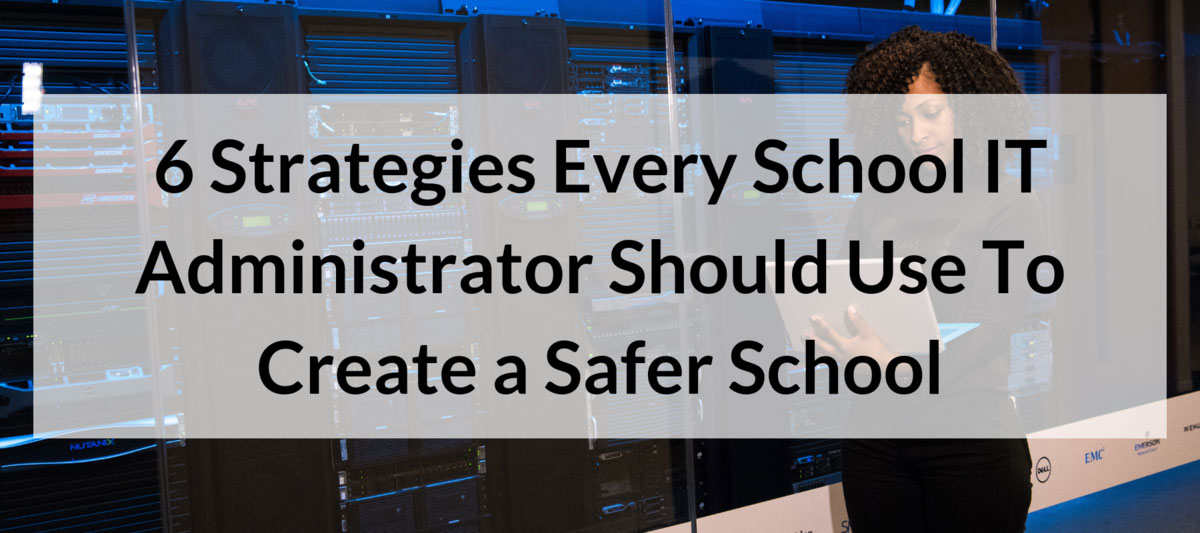
6 Strategies Every School IT Administrator Should Use To Create a Safer School
IT Administrators work behind the scenes to make sure a school has the technology infrastructure it needs to engage and teach students. Making this happen takes more than plugging in a network cable! The 6 strategies that follow will make sure that you are an effective campus IT administrator.
Show Don’t Tell
Technology is rarely cheap. It’s an investment both in time and money. Effective IT Administrators don’t just implement something and tell school staff to start using it.
Effective IT Administrators do three things when new technology is introduced:
- Use the software themselves. If you don’t find it useful enough to use it regularly, then why would school staff?
- Show practical application. Instead of giving a basic walkthrough, provide a how-to that gives real-life scenarios and examples. Let staff see how this will benefit them in their daily routine.
- Encourage and support staff. School staff comes to new technology at different levels. Some jump right in, while others need more hand-holding. Make sure all staff feels supported and encouraged. If someone is struggling, be empathetic--let them know that they’ll get the hang of it over time.
Bandwidth Matters
The days of Oregon Trail are gone! Today’s learning software runs mostly over the cloud and can suck your school’s bandwidth dry; this results in teachers complaining about videos and software that run to slow to properly use in their classroom.
Monitoring bandwidth will help IT Administrators quickly see what might be slowing down the network so they can optimize the performance.
Setting rules and limits for Internet usage will also help. Not every classroom or student is alike; some will need more bandwidth than others and setting rules will help you define each.
Cybercrime for Education
When you think of Cybercrime, you probably think of banks and government institutions.
While stories about hackers breaking into the FBI or some large bank may take up the headlines, cybercrime in education is alive and well.
Schools large and small have reported being victims of cyber attacks.

IT Administrators need to think ahead of the crime: why would someone want to attack your system in the first place? Do you host internal sensitive information? Or perhaps it would be just as a prank.
Once you consider all the “why’s” have a plan that addresses each one.
Map Out Your Users
Part of having a good cybersecurity plan is knowing your users. It’s important to know what devices are using your network and map them directly to their users; this allows IT Administrators to identify potential network problems right to their appropriate device quickly.
Monitor Network Activity
The last step in a school cybersecurity plan should be having a solution to monitor network activity. Most schools have dozens (even hundreds) of devices on their network; it’s too time-consuming to monitor each one. Network activity software will help IT Administrators quickly see and respond to any suspicious activity.
Delegate Down
Rise Vision has thousands of schools that rely on its digital signage content management system.
The most effective IT Administrators have told us the most important thing when deploying digital signage (which also applies to much of the software they deploy) is delegating users to manage it.
While the IT Administrator plays the critical role in making sure the software is launched, in many cases, their job is done after this point.
If you are a school IT administrator and want more pro tips, check out some of our most popular related blogs:
- Is Google for Education Right for Your School?
- Creating a Cost-Effective Financial Literacy Lab
- 9 Actions That Should be on Your Cybersecurity Checklist
Cybersecurity for Education
When you think of Cybercrime, you probably think of banks and government institutions.
While stories about hackers breaking into the FBI or some large bank may take up the headlines, cybercrime in education is alive and well.
Schools large and small have reported being victims of cyber attacks.
IT Administrators need to think ahead of the crime: why would someone want to attack your system in the first place? Do you host internal sensitive information? Or perhaps it would be just as a prank.
Once you consider all the “why’s” have a plan that addresses each one.
Want to learn more? Check out these great resources:
- Ryerson, a Canadian university has a great website that's full of resources on Cybersecurity Awareness Month. They also do a great job of including stats about themselves that are highly relevant to its readership.
- The NICE K12 Cybersecurity Education Conference features speakers exploring best practices, trends, and new directions in cybersecurity.
- This article from Toptal covers problems and solutions with cybersecurity in higher education.
- Deloitte has an article all about elevating cybersecurity on the higher education leadership agenda.
And if you want to raise awareness of cybersecurity check out these three templates for your digital signage:
|
Cyberaware Month Template
|
Cyberaware Month Portrait Template
|
|
Cybersecurity Portrait Template
|
Cybersecurity Landscape Template
|
|
Cybersecurity Animated Template
|
Stop Think Connect Template
|
More From Our Blog
-

Screen Sharing for Workplace Collaboration | Rise Vision
Screen-sharing technology has transformed how teams communicate and work together in real-time, regardless of their location. It can make presentations more engaging, support remote work, and speed[…]
Read More -

How to Use PowerPoint for Digital Signage
To create stunning, attention-grabbing, and effective digital signage content, you need the help of content creation and presentation tools. One of the most popular is Microsoft PowerPoint, owing to[…]
Read More -
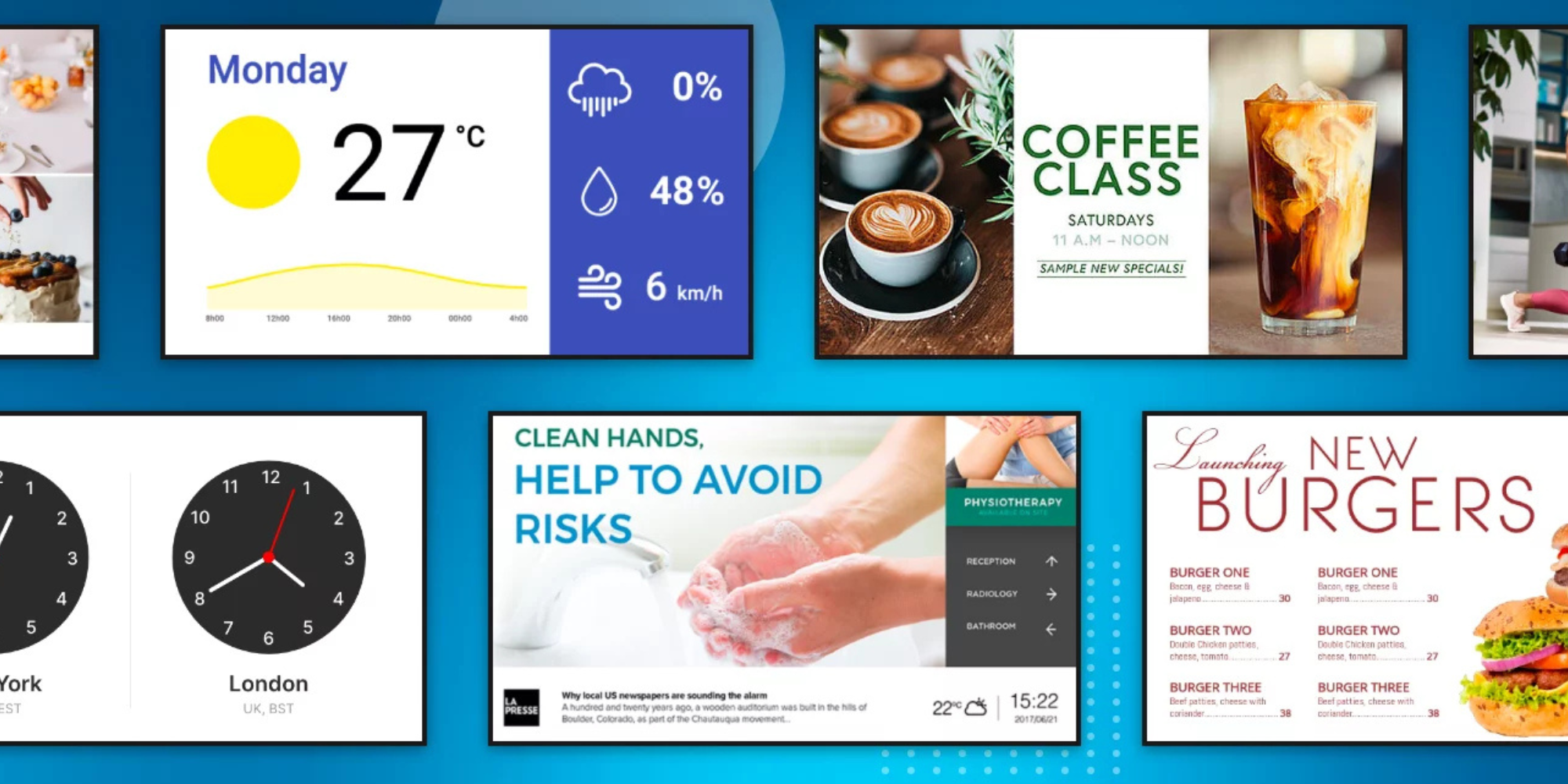
120 Digital Signage Content Ideas
So…. you decided you would invest in some digital signage software and you need some ideas for ways you can make it stand out. This article is your go-to source for the best digital signage content[…]
Read More
Keep Your Displays Interesting – Pick New Templates Every Week!
Every week, we send template recommendations that will make you look great and improve your audience experience. And the best part, they save up to 16 hours of content creation time every week!
12,300+ Organizations Trust Rise Vision, You Can Too
Schedule a Free Demo
You deserve the #1 all-in-one platform for digital signage, screen sharing, and emergency alerts.






.gif?width=480&name=presentation_template_rva_UpcomingExamTemplate3%20(1).gif)
